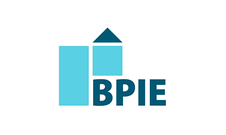Search eceee proceedings
Shaping consumer energy advice to achieve energy and climate targets
Panel: 3. Local action
This is a peer-reviewed paper.
Authors:
Catrin Maby, Cardiff University, United Kingdom
Rod Janssen
Louise Sunderland
Abstract
The European Union has climate and energy targets for 2020 and 2030 that include an indicative target for energy saving. In November 2016, the European Commission launched proposals for a new energy package, with a binding energy efficiency target of 30% by 2030, and three headline goals: putting energy efficiency first, achieving global leadership in renewable energies and providing a fair deal for consumers.
In moving from a model focussed on energy supply solutions to one that gives priority to managing demand, the consumer is placed at the centre of the market. The reliance in this decentralised model on large numbers of individual actions by consumers creates a huge need for information, advice and support. The emphasis must be on ensuring consumers have the tools and information to make appropriate decisions on energy renovation, and are supported to take these decisions through to action. Consumer advisory services can help to: create awareness that leads to increased demand for ambitious energy renovations, overcome market barriers and distortions from a malfunctioning market, secure actual delivered energy and carbon savings, and address social inclusion and fairness.
It is argued that to be effective in supporting consumers to achieve deep energy renovation, advisory services must be expert, impartial, accessible and practical. The advice provided needs to cover a range of technical, financial and behavioural issues, and cannot be delivered effectively through a remote and depersonalised approach. Based both on practical delivery experience and recent research (in Europe and throughout the OECD), a model for delivery is suggested, with local or regional contact hubs, and inclusion of a long term plan for the renovation of each building. The latter takes account of the likelihood for many buildings that a deep renovation will be staged over time, and integrated with other repair, maintenance and improvement works.
Downloads
Download this presentation as pdf: 3-083-17_Maby_presentation.pdf
Download this paper as pdf: 3-083-17_Maby.pdf
Panels of
1. Foundations of future energy policy
2. Policy: governance, design, implementation and evaluation challenges
4. Mobility, transport, and smart and sustainable cities
5. Buildings and construction technologies and systems
6. Buildings policies, directives and programmes
7. Appliances, products, lighting and ICT
8. Monitoring and evaluation: building confidence and enhancing practices























